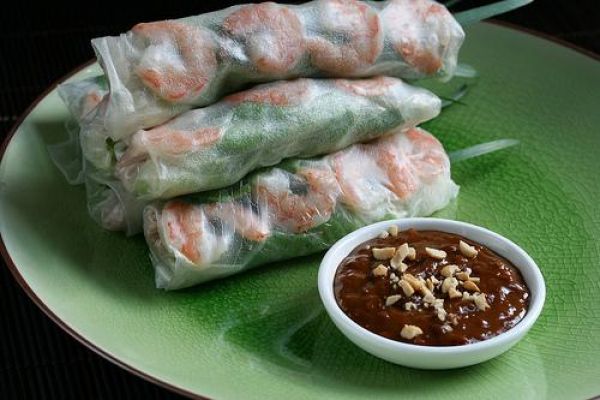On the menus in some of these restaurants, gỏi cuốn is translated into English as “spring roll”, however, gỏi cuốn literally translates from Vietnamese as “mixed salad roll”. These salad rolls are in fact easily distinguished from actual spring rolls or Chả Giò.
Although typically served as an appetizer in North American and some European Vietnamese restaurants, these rolls are most often eaten as a snack in Vietnam. Unlike the even more popular Chả Giò crispy spring rolls, which are usually stuffed with ground pork, shrimp, cabbage, & vermicelli noodles before being deep-fried; Gỏi Cuốn salad rolls are never fried and will be served either cold or more commonly at room temperature and are soft in texture.
Salad rolls are extremely popular with the Vietnamese, especially among students from secondary school through collage. Gỏi Cuốn are meant to be eaten by hand and dipped into the sauce of choice, typically using quite a bit of sauce per bite. Usually sold per piece in Vietnam, the price for each can vary from roughly the equivalent of 10 cents to 40 cents US, although the cost may be much more in high class restaurants. While not overly pricey, like most meals in SE Asia they are never as inexpensive when served in the west.
Since the late 1980’s, Gỏi Cuốn have become an increasingly popular menu item in many places around the world. Often referred to as Vietnamese spring rolls (in Australia), crystal rolls or soft rolls (in the United States) or fresh shrimp rolls in some Vietnamese restaurants in Canada, the proper name “Salad Roll” is becoming more commonly used as time goes by.
They are now a regular part of meals served at most Vietnamese restaurants, and while the ingredients have certainly changed somewhat in order to better suit Western palates the basics are still more or less the same as the original. It’s these fresh ingredients which create the flavor that make Gỏi Cuốn the favorite that it is.





